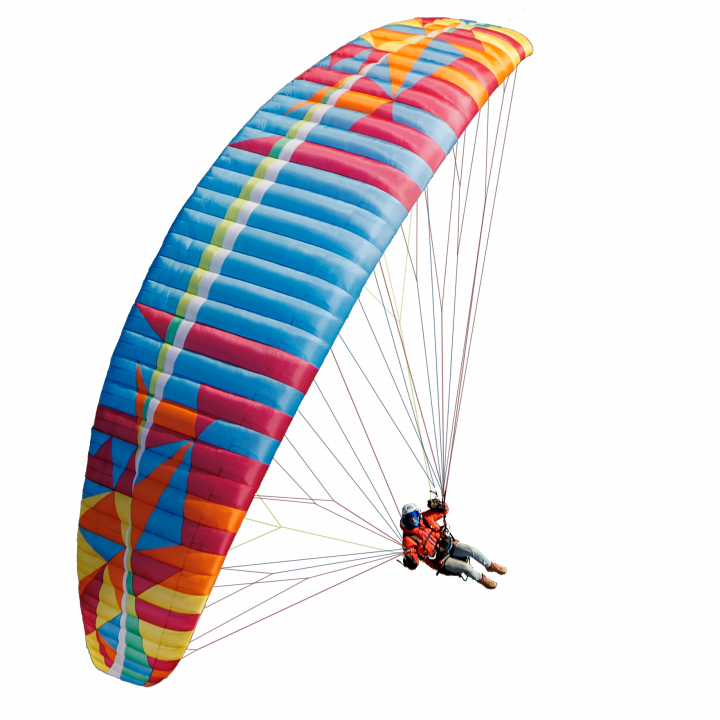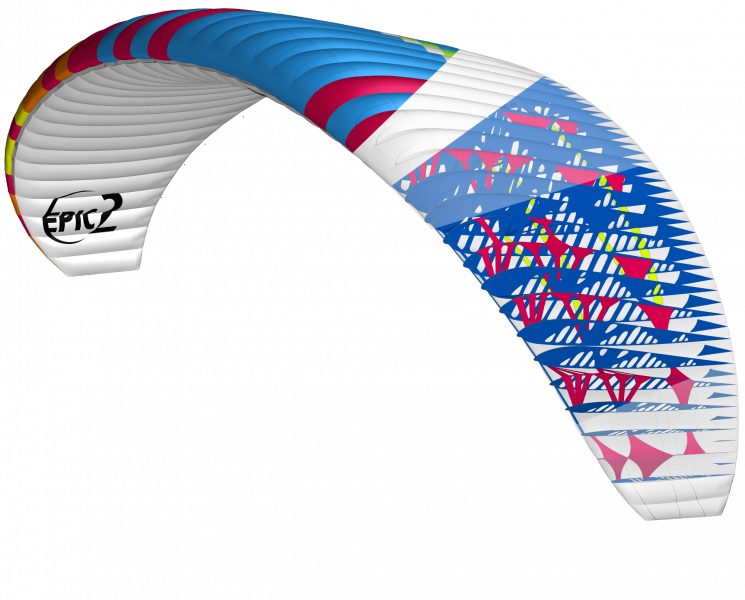The EPIC 2 is very safe and reassuring, accessible to low-airtime pilots but with handling and performance that experienced pilots will love.
We’ve improved the launch behaviour – the wing comes up smoothly and easily without overshooting. In flight, it’s slightly faster than its predecessor (+1km/h at trim, +3km/h top speed) and has improved glide. It’s also a great climber, especially in weak lift.
Long brake travel means you won’t accidentally stall or spin, but it is precise on the brakes with direct, playful handling. The EPIC 2 is safe and reassuring in strong air, but does not hide the bumps. At BGD we think feedback is really important: the wing tells the pilot about the conditions, and the pilot can anticipate and avoid collapses.
Like on the BASE 2, the new EPIC 2 risers have a B/C steering system for piloting the wing while pushing the bar and flying at speed.
TARGET
A safe, fun wing that’s a joy to fly. We’ve improved the performance while maximising safety, and the EPIC 2 is a versatile wing. It’s perfect for first cross-countries or a go-anywhere glider for weekend pilots. And, like the original Epic, it’s a great tool for getting to grips with your first freestyle moves. The test team can confirm it’s loads of fun for wingovers, SATs, heli’s and the like.
DESIGNER’S NOTES
The EPIC has been a very successful Low B wing. It was important to us to keep the accessibility and handling it was known and loved for, while improving performance. It has great glide and climbing ability, and a bit more speed than the original.
While it might look quite similar at a glance, design-wise a lot has changed. It now has 45 cells and an aspect ratio of 5.2, both slightly higher than on the original EPIC. The internal supporting structure is more intricate, but despite all this the glider weighs the same, 4.9kg for the M. The riser set is new, and the lines are a mixture of unsheathed higher up, and sheathed at the bottom.
The Epic 2 has short rods in the leading edge and none in the trailing edge, so it is easy to pack. The single-piece leading edge plastics are made of different materials: stiffer purlin in the central section with softer, more flexible supports towards the tips. It’s a light, elegant and effective method for shaping the leading edge.
As on the BASE 2 and CURE 2, there is a double skin on the lower surface of the leading edge. The internal pressure of the wing pushes on this lower skin which helps pressure it to maintain a clean and stable leading edge.
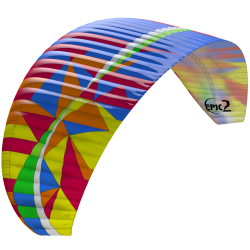
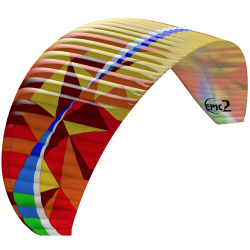
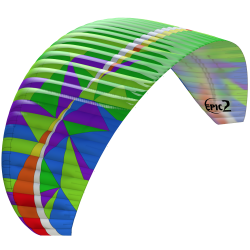
MATERIAL
| TOP SURFACE | Porcher Skytex 38g/m² |
|---|---|
| BOTTOM SURFACE | Porcher Eazyfly 40g/m² |
| INTERNAL STRUCTURE | Porcher Skytex hard finish 40g/m² |
| NOSE REINFORCING | Plastic wire 2,3 / 2,7mm |
| RISERS | 12mm Kevlar / Nylon webbing |
| PULLEYS | Allen |
| TOP LINES | Edelrid 8000U |
| MIDDLE LINES | Edelrid 8000U |
| LOWER LINES | Edelrid PPSL and TSL |
| BRAKES | Liros DSL, PPSL |
SPECS
| XS | S | M | ML | L | |
|---|---|---|---|---|---|
| LINEAR SCALING FACTOR | 0.92 | 0.96 | 1 | 1.04 | 1.08 |
| PROJECTED AREA (M²) | 17.7 | 19.4 | 21.1 | 22.8 | 24.5 |
| FLAT AREA (M²) | 21 | 23 | 25 | 27 | 29 |
| GLIDER WEIGHT (KG) | 4.4 | 4.6 | 4.9 | 5.1 | 5.4 |
| TOTAL LINE LENGTH (M) | 227 | 233 | 244 | 254 | 263 |
| HEIGHT (M) | 6.4 | 7 | 7.1 | 7.3 | 7.5 |
| NUMBER OF MAIN LINES (A/B/C) | 3/4/3 | ||||
| CELLS | 45 | ||||
| FLAT ASPECT RATIO | 5.2 | ||||
| PROJECTED ASPECT RATIO | 3.8 | ||||
| ROOT CHORD (M) | 2.5 | 2.6 | 2.7 | 2.8 | 3 |
| FLAT SPAN (M) | 10.4 | 10.9 | 11.4 | 11.8 | 12.3 |
| PROJECTED SPAN (M) | 8.2 | 8.5 | 8.9 | 9.3 | 9.6 |
| TRIM SPEED (KM/H) | 39 | ||||
| TOP SPEED (KM/H) | 53 | ||||
| MIN SINK (M/S) | 1 | ||||
| BEST GLIDE | 9 | ||||
| WEIGHT RANGE (KG) | 55-75 | 65-85 | 75-95 | 85-110 | 100-125 |
| CERTIFICATION (EN/LTF) | B | ||||
